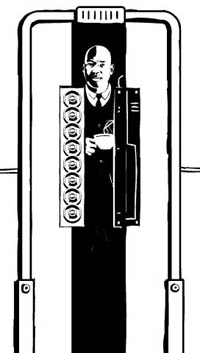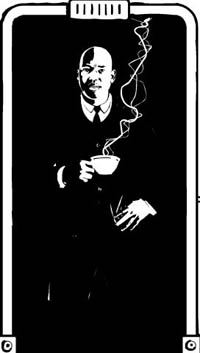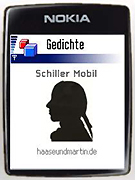A couple of weeks ago, Sebastian Mary posted about experiments with sending out literature via Twitter. She found herself disappointed that DailyLit was neither “abridging the text savagely for hyper-truncated delivery, or else delivering the unabridged text 140 characters at a time”; instead, texts not built for Twitter were being shoehorned into the Twitter form. Twitter might be the electronic form du jour, but this is a problem as old as electronic writing: the presumption that texts are form-agnostic.
An interesting approach to the problem comes from an unexpected source: the New York Review of Books has begun serializing Félix Fénéon’s Novels in Three Lines via Twitter in Luc Sante’s translation. Fénéon was a fin-de-siècle French writer who’s best known as the art critic who coined the term “pointillism”. (Paul Signac’s portrait of him, Against the Enamel of a Background Rhythmic with Beats and Angles, Tones and Tints, Portrait of Felix Feneon in 1890, is below.) Fénéon was a man of many talents; while publicly known as an anarchist and the first French publisher of James Joyce, he was secretly a master of miniaturized text. His anonymous feuilletonage in Le Matin in 1906 condensed the news of the day to masterpieces of phrasing:
In a café on Rue Fontaine, Vautour, Lenoir, and Atanis exchanged a few bullets regarding their wives, who were not present.
Fénéon’s hypercompression lends itself to Twitter. In a book, these pieces don’t quite have space to breathe; they’re crowded by each other, and it’s more difficult for the reader to savor them individually. As Twitter posts, they’re perfectly self-contained, as they would have been when they appeared as feuilleton.
A quotation from Buckminster Fuller (from Synergetics 529.10) seems apropos for thinking about why Fénéon seems so suited to Twitter:
It is one of the strange facts of experience that when we try to think about the future, our thoughts jump backwards. It may well be that nature has some fundamental metaphysical law by which opening up what we call the future also opens up the past in equal degree.








